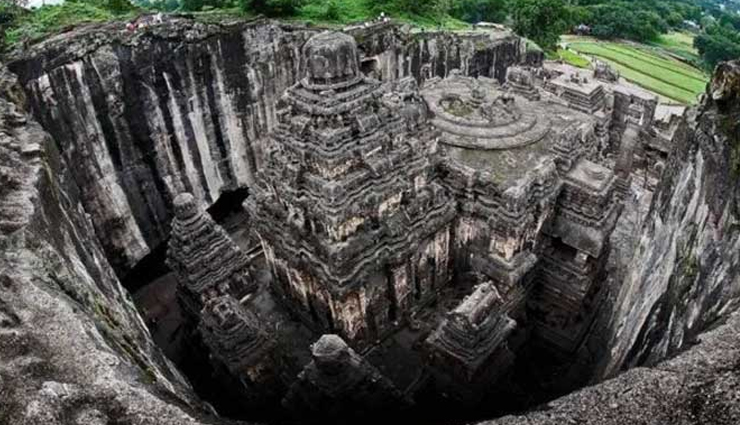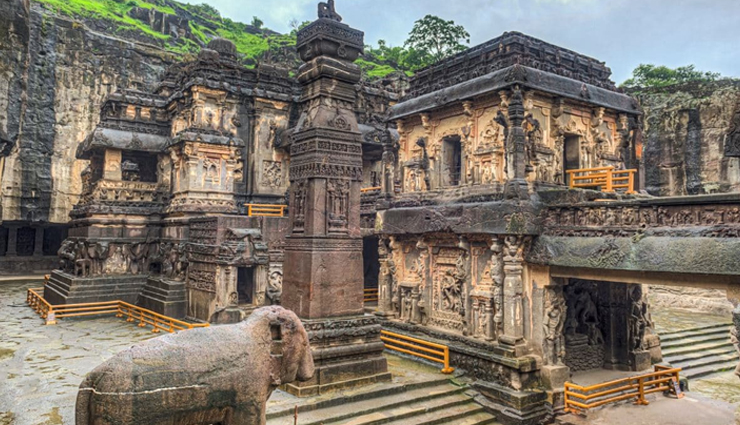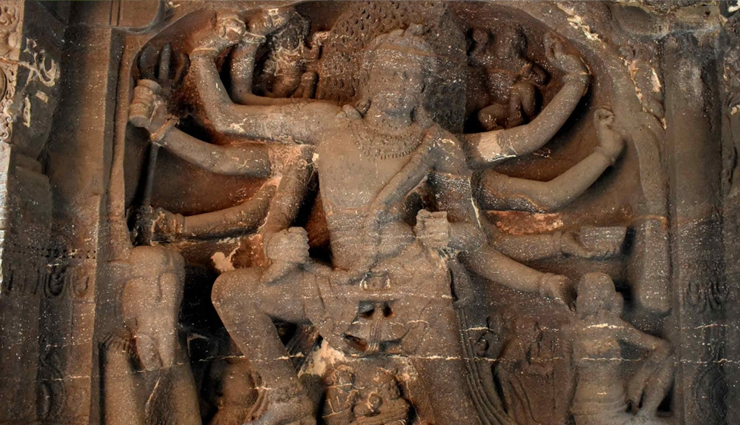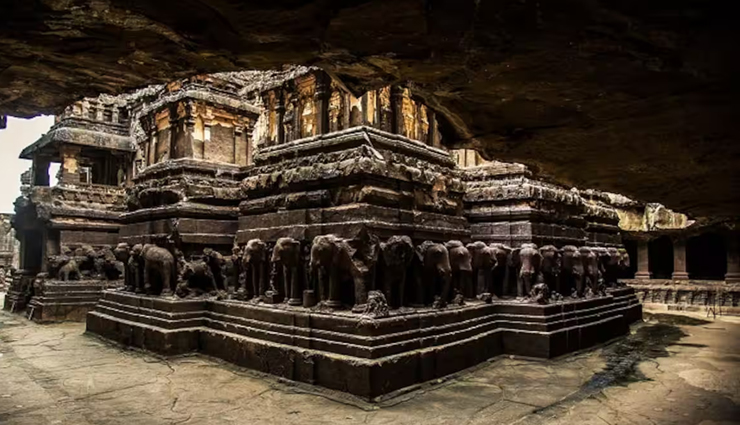Things You Must Know About Kailasa Temple, Ellora Caves, Maharashtra
By: Pinki Sat, 29 July 2023 6:56:21

Although not officially declared one of the wonders of the world, the greatness of the Kailash Temple in Ellora is undeniable. Located approximately 30 km from Aurangabad in Maharashtra, this rock-cave temple is renowned as the largest monolithic structure globally. Interestingly, it bears striking resemblances to the Virupaksha temple in northern Karnataka.
The Kailash Temple is the sixteenth cave among the grand Ellora Caves, which consist of 32 cave temples and monasteries. Historical records attribute its construction to the 8th-century Rashtrakuta King Krishna I, who commissioned its building between 756 and 773 AD. Notably, other nearby temples showcasing non-Rashtrakuta styles suggest the involvement of Pallava and Chalukya artists.
It is widely believed that the architects of the Virupaksha temple played a significant role in designing the Kailash Temple. Having a ready-made design and model likely facilitated the construction of such a monumental temple within the span of one monarch's lifetime, requiring lesser efforts to achieve such a feat.

Built by King Krishna I in AD 760 to symbolize Mount Kailasa, Lord Shiva's Himalayan abode, this astonishing temple stands as one of India's greatest monuments. Carved entirely from solid rock, the endeavor was nothing short of audacious. Engraving three massive trenches into the sheer cliff face, a staggering 200,000 tonnes of rock had to be painstakingly chiseled away before the temple could take form, adorned with its remarkable sculptural decorations.
Encompassing double the area of Athens' Parthenon and towering half again as high, Kailasa is an engineering marvel executed solely from imagination, leaving no room for error. Even modern draughtspeople could learn a thing or two from this feat.
Inside the temple, several intricately carved panels narrate scenes from revered epics like the Ramayana, the Mahabharata, and the adventures of Krishna. Additionally, the courtyard boasts immense monolithic pillars flanking the entrance on both sides, while the southeastern gallery showcases ten giant panels illustrating various avatars of Lord Vishnu.
Beyond the main enclosure, veer away from the crowds of snack-munching day trippers to explore the temple's dank corners, where numerous forgotten carvings reside amid the pungent odor of bat urine. Then, venture up the sturdier path south of the complex (past the scaffolding) to reach the top perimeter of the 'cave,' providing a bird's-eye view of the entire temple complex.

The Legend Behind Kailasa Temple
During the medieval period, the rock temple was known as the Manikeshwar cave temple, as attested by various literary sources. Legend has it that Queen Manikavati of the Kingdom of Elapura commissioned its construction. The tale goes that a king from Alajapura, present-day Ellichpur in Amravati District, Maharashtra, suffered from an incurable illness due to a past-life transgression. In an effort to cure him, the queen, accompanied by the king, embarked on a hunting expedition to Mahisamala, near Ellora, where she worshipped the deity Ghrishneshwar and vowed to build a temple in honor of Lord Shiva if the king's health improved.
To their astonishment, the king's health indeed improved after he bathed in the tank at Mahisamala. Overjoyed by this miraculous recovery, the queen insisted on commencing the temple's construction without delay. However, she vowed to observe a fast until she saw the Sikhara, the crowning element at the temple's summit. Though the king agreed to her wish, finding an architect willing to complete the temple swiftly was challenging. Eventually, a resident of Paithan in Aurangabad named Kokasa stepped forward to take on the task. He assured the king that the queen would witness the Sikhara within a week. To expedite the process, Kokasa and his team began carving the rock temple from the top, focusing on completing the Sikhara swiftly and thus liberating the royal couple from their plight. As a tribute to the queen's unwavering devotion, the temple was named Manikeshwar, and the king founded a town called Elapura, which is now known as Ellora.

An Architectural Wonder
Dating back to the 8th century and originating from the Rashtrakuta dynasty, the Kailasa Temple stands as an extraordinary monolithic structure, a magnificent representation of Mount Kailash, devoted to Lord Shiva. The construction process, as described by scholars, entailed excavating three large trenches at right angles into the hillside. These trenches outlined the temple's courtyard, resulting in a substantial isolated rock mass, around 200 ft long, 100 ft wide, and reaching a height of 100 ft at its highest point.
Within the temple complex, one can marvel at a shrine, halls, pillars, corridors, and an array of sculptures and reliefs. The entrance is graced by imposing stone elephants and an intricately designed Nandi mandapam. Adding to its allure, the temple's walls showcase meticulous carvings, narrating scenes from Hindu mythology, including episodes from the ancient epics of Ramayana and Mahabharata.

Beyond its impressive architectural features, the Kailasa Temple complex holds profound cosmological significance. Scholars interpret its design as a symbolic journey from the material to the spiritual, from the earthly to the celestial, and from matter to mind. The Gopuram, the temple's entrance gate, symbolizes the primary entry point, marking the transition from the human world to the sacred realm. As visitors progress from one mandapa (hall) to the next, they may observe a deliberate decrease in size, volume, and space, accompanied by a gentle dimming of light. This intentional design element aims to reduce distractions, allowing visitors to experience a sense of proximity to the sacred realm as they venture further into the temple complex.





